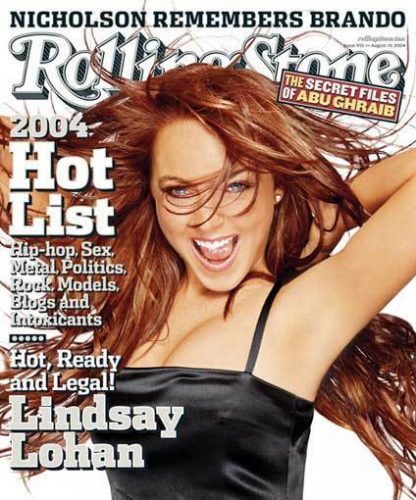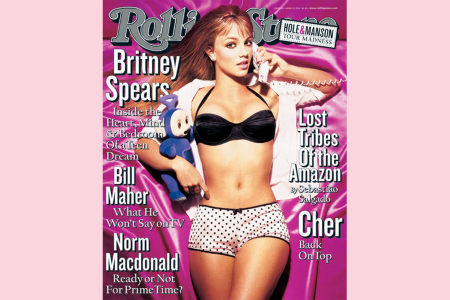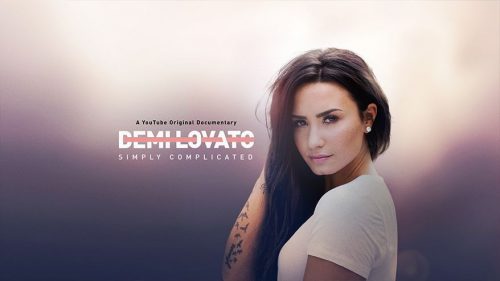Media treatment of women in the 2000s would be completely unacceptable now
Is the media to blame for Britney Spears’ “Toxic” conservatorship?
Media treatment of female stars in the 2000s would be unacceptable by today’s standards. Taking a close look at where they are now, reveals how negatively this affected them. (Photo illustration by Ariel Caspar)
In the early 2000s, it was almost unheard of for celebrities to openly talk about their struggles with mental illness. Mental health awareness was extremely suppressed in an industry where public image was everything, especially for money-making-machine, former child stars.
Media in the 2000s was heavily focused around who had the hottest bodies, the hottest music, the coolest style – who had it all, or more appropriately, who seemed to have it all. Forget about being raw, personal, open and honest with your fans about your struggles—this was all suffocated by the publicity machine of the Hollywood industry.
Britney Spears and other female childhood stars whose careers began to take off in the late ‘90s and early 2000s, including Amanda Bynes, Christina Aguilera and Lindsay Lohan, were held to impossible standards of perfection and were all victims of media mistreatment in a misogynistic era, dominated by boosting the male ego.
Even though there are still gender gaps in the Hollywood industry today, most would never dream of young stars being treated like they were in the 2000s. But as a new documentary on the subject makes clear, this was the norm in an era that relished in the downfall and drama of young starlets.
Britney Spears’ story is one we will never forget.
In recent news, a fan-generated campaign that started in 2019 called “Free Britney,” or “#FreeBritney,” has worked its way into headlines and social media all over the world and the internet. The movement was created to raise awareness of Spears’ conservatorship that has been in effect since 2008.
Conservatorships are legal arrangements that are usually put in place by families over individuals who are incapable of making decisions for themselves, and give that authority to the sole conservator, which is usually a coherent family member.
Spears’ family believed placing her under temporary conservatorship was the right move at the time, given her erratic behavior after she had what the media defined as a “psychotic break” in 2007 when she shaved her own head in a barber shop in Los Angeles, because she didn’t want anyone touching her anymore. Just a day before the incident, Spears had been admitted into a drug rehabilitation center, according to a Cheat Sheet article.
Later in January 2008, Spears lost custody of her two sons when she was hospitalized after police claimed she had been under the influence of an unidentified substance. Shortly following, she would be forced to forfeit her freedom and enter into an intense legal arrangement that would change her life forever.
Thirteen years later, fans believe the conservatorship is unnecessary for the 39-year-old singer, and should be removed immediately, an intense legal battle that could take several years to see results, since the so-called “temporary” conservatorship is actually permanent and irrevocable.
According to Forbes, which covered the debacle regarding Spears’ mysteriously depleting net worth, the only way to have one removed is for the conservatee to petition for its removal. After that, the California Court ultimately decides if it is removed or stays in place. Supporters of the “Free Britney” movement argue that Spears is a mature adult now, who is more than capable of handling her own finances and making her own decisions.

Earlier this year, the documentary series “The New York Times Presents,” released an episode entitled “Framing Britney Spears,” that suggests Britney’s failing mental health may have been a result of pushy, exploitative paparazzi, raking in over $140,000 for one photograph of her, which led to complete lack of privacy in her personal life. Not to mention a build-up of inappropriate interviews, false headlines and the pressure of maintaining her role as a popular Hollywood sex symbol after having two children.
The pressure led Spears to a breaking point in her mental health in 2007, and according to “Framing Britney Spears,” the initial reason for implementing the conservatorship was for Spears’ safety, protection and overall well-being. Unfortunately, this conservatorship controls every aspect of her life, specifically control of her estate, assets and person.
This means, she cannot do anything, go anywhere, speak to anyone, spend any money or make a decision without the permission of her handlers. She is basically a prisoner in her own home, unless given permission to leave otherwise, and rarely gets to see her two sons, who now permanently reside with their father, Spears’ ex-husband, Kevin Federline, with whom she shares 30/70 custody.
Currently, Spears’ father, Jamie Spears, is the sole conservator over Spears’ person and her $60 million fortune, a figure that has been widely debated by fans according to a Forbes article. According to a Style Caster article, Spears has stated many times she does not want her father controlling her life and finances, and in August 2020 requested to have him removed. This request is still pending, and will most likely be denied. In the same month, her 29-year-old sister, Jamie Lynn Spears, was named as the trustee of her estate. Fans and conspirators of the conservatorship saga speculate that with this title she may inherit all of Spears’ assets if Britney were to die, and not her teenage sons, but this is not confirmed.
Given the circumstances of her unwanted conservatorship, Spears has refused to work since 2019, when she announced the cancellation of her “Domination” show, which was supposed to run for 31 shows as part of her Las Vegas residency, according to a New York Times article. Originally she announced she would be going on an “indefinite work hiatus,” citing her father’s health as an excuse, but fans and “Free Britney” supporters speculate the real reason for the residency’s cancellation may have something to do with the conservatorship.
It wasn’t until recently that details of her conservatorship were made public, thanks to social media and Spears’ millions of fans that have been keeping a close eye on the Grammy Award and VMA Award winning singer. Fans have created podcasts, blogging sites, social media pages and even merchandise for the sake of raising awareness for Britney, who still holds the title “Princess of Pop.”

Other child stars do not have the same amount of support.
According to a Blast article, Amanda Bynes, who got her start on Nickelodeon’s “The Amanda Show,” has also been under a conservatorship since 2013. The 33-year-old actress’s mother is her sole conservator with complete control over Bynes’ assets and finances. Bynes was placed under conservatorship after her drug addiction and bizarre, reckless behavior grew out of her family’s control.
Bynes has been in and out of rehab facilities and gone through various therapeutic treatments over the last decade, but claims she is on the right track to sobriety and hopes to take her life back, but she can’t do that with her mother making all of her decisions for her.
According to a Cheat Sheet article, Lindsay Lohan’s father, Michael Lohan, had strongly desired to place her under conservatorship in 2010, after her substance abuse, and various dealings with the court for illegal acts had ruined her career, but her siblings did not agree with the arrangement, and the plan was abandoned.
Yes, we know these women have struggled with substance abuse and mental illness. We know they need extra love and support, but the real question is, why do their handlers and families believe that conservatorships are the best possible solution? Spears and Bynes are living proof that being under that level of control is more detrimental than helpful. They might as well have been given a death sentence.
These are women who have endured the pressures and pain of being in the Hollywood spotlight since they were children, and who were raised up with unrealistic expectations of womanhood. Their personal struggles were the focal point of the media circus for years, and they have lived their lives under a microscope with no room to breathe or to be themselves. It’s no wonder why they were driven to the edge and were taught to be ashamed of their short-comings. Not to mention, they were exploited and hyper-sexualized before they were even of legal age. Men did not appreciate these women, they lusted after them.
When Lindsay Lohan turned 18, less than a week later, Rolling Stone featured her on the cover of its 2004 “Hot List” issue, in which the cover said, “Hot, Ready and Legal!” The entire first part of the article, written by a male, was dedicated to the fixation and authentication of Lohan’s breasts which the writer had verified with “discreet visual fact checking” and a “goodbye hug,” according to a Washington Post article.

Spears had a similar first-time experience with Rolling Stone, when she was shot for its cover in 1999 at just 17 years old, scantily clad, posing sexually in her childhood bedroom in Kentwood, Louisiana.

What were publications thinking in this era? And “sex sells” is not a good enough answer.
The way Hollywood values and represents women has changed dramatically since the 2000s, now leaning towards female empowerment, respect and equality. In the 2000s, female stars were heavily objectified and were the center of the media. The industry didn’t care about female empowerment, it was all about pleasing men.
And forget about conversations surrounding mental illness in the 2000s. It was too much, too awkward, and too embarrassing to face head on. It was much easier to portray these stars as crazy, out-of-control freaks in desperate need of special, controlled treatment. Tabloid magazines and news outlets tore these women apart with no mercy, creating a hopeless narrative for them. What’s sad is these destructive narratives left them with humiliating legacies they can’t run far enough away from.
In 2021, the industry is taking a much different approach to female empowerment and normalizing mental health awareness. Celebrities can now be advocates and role models for mental health. They can be an encouragement to others, normalizing taking medication, going to therapy, and simply getting help, removing the stigma surrounding mental illnesses one step at a time.
A modern day example of this would be pop superstar Demi Lovato. Lovato too was a child television star, getting her start as a “Barney and Friends” cast member, working her way up to starring in films and TV shows with the Disney Channel. What fans didn’t know was that the 28-year-old “Confident” singer was battling a serious drug addiction during a portion of her time with the Disney Channel, that followed her into her career as a solo pop artist, according to the YouTube documentary, “Demi Lovato: Simply Complicated.”

What was kept hidden at the time, is now entirely out in the open, by Lovato’s own choosing. She’s talked about her drug abuse, trauma and ongoing struggle with body image and mental well-being across multiple platforms, including social media, documentaries and talk-shows. Even after her July 2018 relapse, she still was entirely open and transparent about the situation.
YouTube released a four-part documentary series on March 23 explaining the details of her most recent relapse and overdose that nearly killed her and left her brain damaged entitled “Demi Lovato: Dancing with the Devil.”
Lovato and her team’s approach to publicly addressing and dealing with mental illness and drug abuse would have been completely unacceptable in the 2000s. And can you imagine if Demi’s friends and family agreed to place her under conservatorship because of her behavior? This would be outrageous by today’s standards. And I’m sure Demi would refuse to be silenced.
Demi is no different than Britney. If Britney had been given a support system like Demi, her story may have been very different than it is now. Demi’s family and team had her best interest in mind, and now the pop sensation is thriving and feeling confident in her own skin. No conservatorship needed.

And most people, including myself, don’t view her story as one to be ashamed of, or one that she should hide from. We don’t see her as defective or weak, or crazy; we see someone strong and vulnerable enough to expose herself in this way, to include us on her journey. To me, she’s never looked healthier or happier.
If only Britney had been given the same chance.










